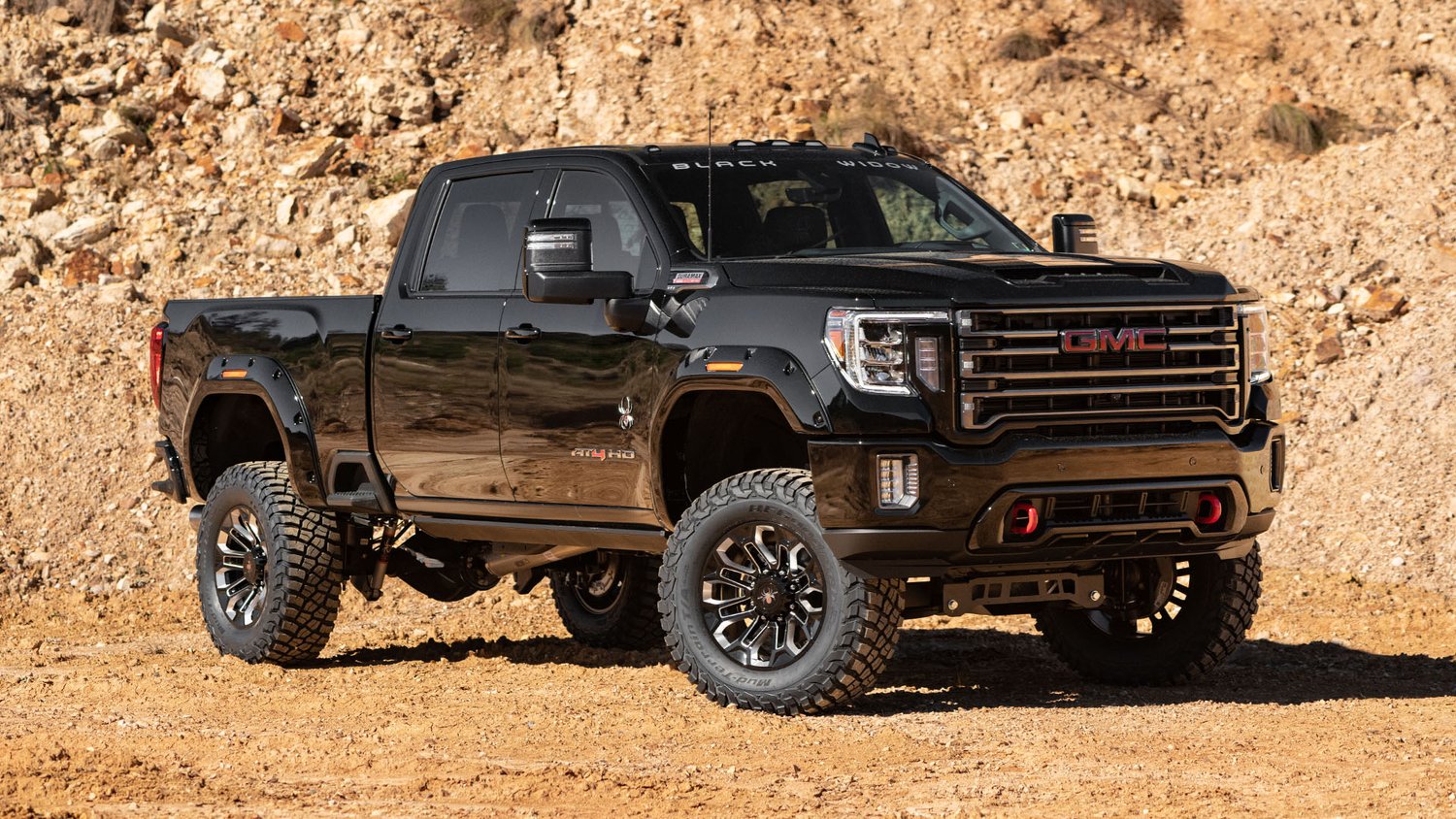When purchasing a truck, most buyers think about power, towing capability, payload capacity, and perhaps brand loyalty. But often overlooked in the excitement of torque specs and ground clearance is one of the most critical factors in long-term ownership—maintenance cost, especially brake pad replacement.
Whether you’re buying for work or recreation, brakes are not just a safety component—they’re a recurring maintenance item that can either subtly drain your wallet over time or provide relief with their affordability. For trucks, which are heavier and often used in more demanding conditions than sedans or SUVs, brake maintenance can differ drastically between models.
Every truck, no matter how rugged or refined, will eventually need new brake pads. The frequency may vary depending on how you drive, what you tow, and where you live, but it’s inevitable. Unlike other wear-and-tear components, brake pads directly influence your truck’s ability to stop safely, which makes them non-negotiable.
For those who use their trucks primarily for commuting or light hauling, brake pads may last 40,000 to 60,000 miles or more. But if you’re towing, driving through mountainous terrain, or navigating rough trails, you’ll be replacing them more frequently—and at potentially much higher costs.
This makes understanding your truck’s braking system not just a matter of performance, but of financial foresight. The cost of replacing brake pads varies widely between trucks.
For some models, a simple brake job may cost less than $200, especially if the pads are standard size and easily accessible. For others, particularly high-performance or heavy-duty trucks, that figure can skyrocket to well over $1,000 once labor and rotor resurfacing or replacement are factored in.
What’s responsible for this massive disparity? In most cases, it’s a combination of truck size, brake design complexity, proprietary components, and electronic integration. For instance, trucks with towing packages or specialized off-road systems often have larger calipers and rotors that require more expensive pads.
Others may feature adaptive braking systems or integrated sensors that increase both part and labor costs. This article breaks down the five trucks with the cheapest brake pad replacements and the five with the priciest, highlighting exactly why they fall into each category.
It’s not just about MSRP or truck class—it’s about the design philosophy behind each vehicle and how that affects everyday maintenance. We delve into specifics: the types of brake systems used, how accessible they are, and what the aftermarket scene looks like for each.
Trucks like the Ford Ranger and Toyota Tacoma offer value not just at the dealership but in the garage, where low-cost, easily swappable pads keep maintenance headaches at bay. On the other end, premium and heavy-duty trucks like the Ford F-250 Super Duty or the RAM 2500 demand more from their braking systems—and your wallet.
Delve into specifics: the types of brake systems used, how accessible they are, and what the aftermarket scene looks like for each. Trucks like the Ford Ranger and Toyota Tacoma offer value not just at the dealership but in the garage, where low-cost, easily swappable pads keep maintenance headaches at bay. On the other end, premium a
Whether you’re a fleet manager trying to optimize service costs across a dozen vehicles, a weekend warrior taking your off-road beast into the wild, or just a commuter who wants the best bang for your buck, understanding brake pad replacement costs can make a significant difference.
It informs not only your budget but your expectations. Are you comfortable doing some wrenching yourself to save money? Do you want a truck you can hand off to a mechanic without bracing for a $1,200 bill?
These are the kinds of questions this guide aims to help you answer. By exploring both ends of the cost spectrum, you’ll walk away better prepared to choose a truck that aligns not just with your lifestyle, but also your financial strategy.
ALSO READ: 5 Trucks With Highest Highway Cruise MPG And 5 With Lowest
Trucks with the Cheapest Brake Pad Replacements
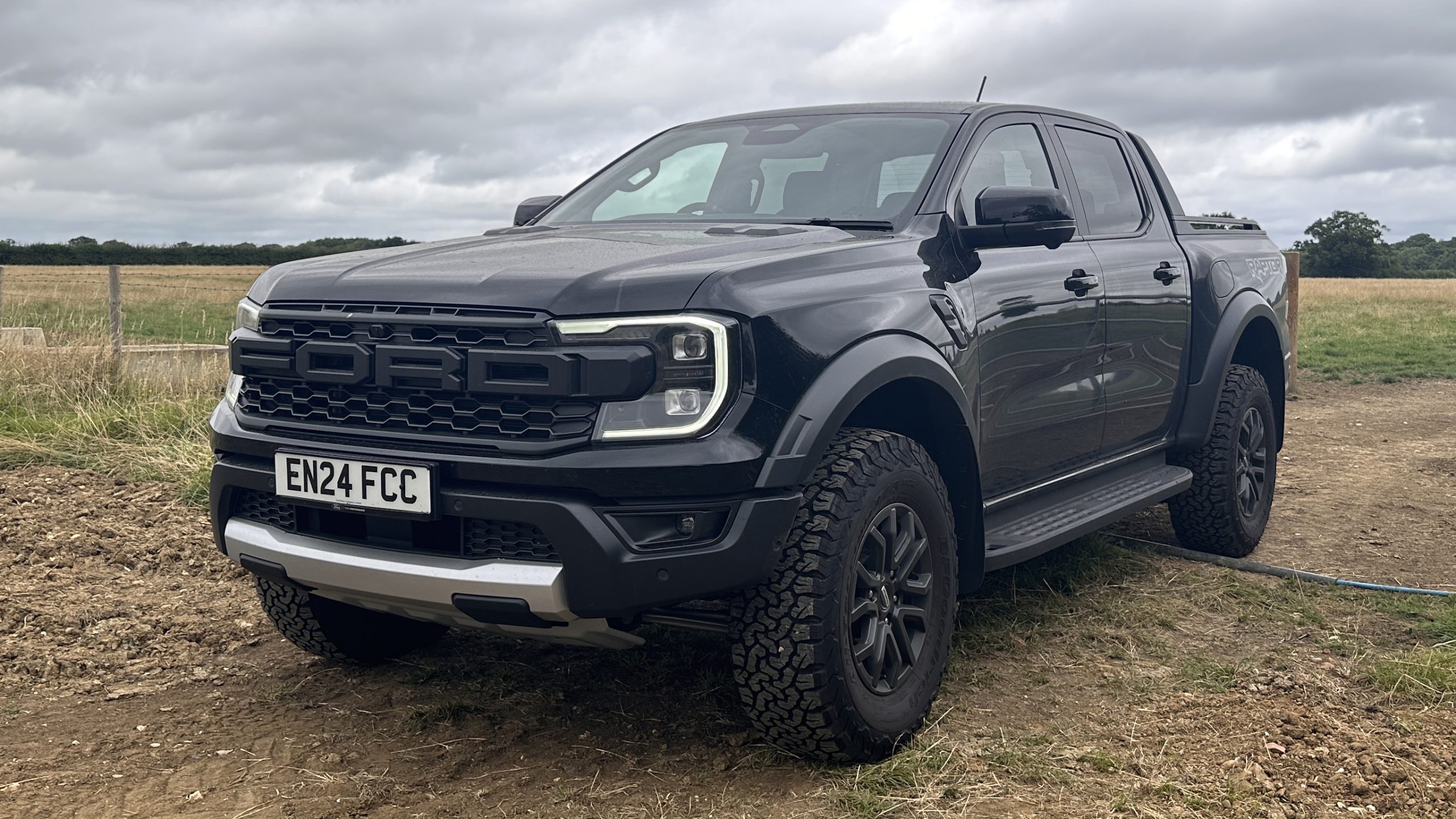
1. Ford Ranger
The Ford Ranger has built a reputation as one of the most cost-effective midsize trucks, not just in terms of purchase price and fuel economy but also in overall maintenance. One standout area where it saves owners money is brake pad replacement. This truck benefits from a simple, practical design that prioritizes accessibility and ease of repair.
Brake components, particularly pads and rotors, are neither oversized nor specialized, which keeps both parts and labor costs low. The Ranger’s design hasn’t drastically changed over recent years, which also contributes to the ease with which parts can be sourced and installed. This kind of consistency is a dream for mechanics and cost-conscious truck owners alike.
One standout area where it saves owners money is brake pad replacement. This truck benefits from a simple, practical design that prioritizes accessibility and ease of repair. Brake components, particularly pads and rotors, are neither oversized nor specialized, which keeps both
One key reason brake replacements are so affordable on the Ranger is the use of standard disc brakes that don’t require proprietary tools or special alignment procedures. Unlike trucks with exotic materials or electronically controlled braking systems, the Ranger’s setup is mostly mechanical and intuitive.
This makes it easy for certified mechanics and even knowledgeable DIYers to handle brake service without unnecessary complications. The truck’s wheel well architecture provides generous working space around the calipers and rotors, meaning fewer labor hours are required and the risk of damaging surrounding components is significantly reduced. That translates directly into reduced shop time and smaller service bills.
Additionally, the availability of aftermarket brake components is vast for the Ranger. Major auto parts retailers and online platforms stock multiple compatible options, ranging from budget pads that cost less than $30 per axle to premium ceramic options that still remain below the $100 mark.
This wide range allows Ranger owners to select parts based on their driving habits and budget. Fleet operators, in particular, appreciate the ability to buy brake components in bulk at discounted rates, driving down per-unit replacement costs and ensuring operational readiness across their vehicle lineup.
For truck owners who prioritize total cost of ownership over luxury add-ons or performance gimmicks, the Ranger continues to impress. In urban, suburban, and even light off-road contexts, this truck’s braking system does exactly what it needs to with minimal fuss and low financial burden.
Especially when compared to full-sized trucks or premium models with complex brake systems, the Ford Ranger offers a sensible, accessible, and affordable solution. That practicality is why it’s often chosen by delivery services, field technicians, and tradespeople who depend on reliability and want to keep maintenance expenses predictable.
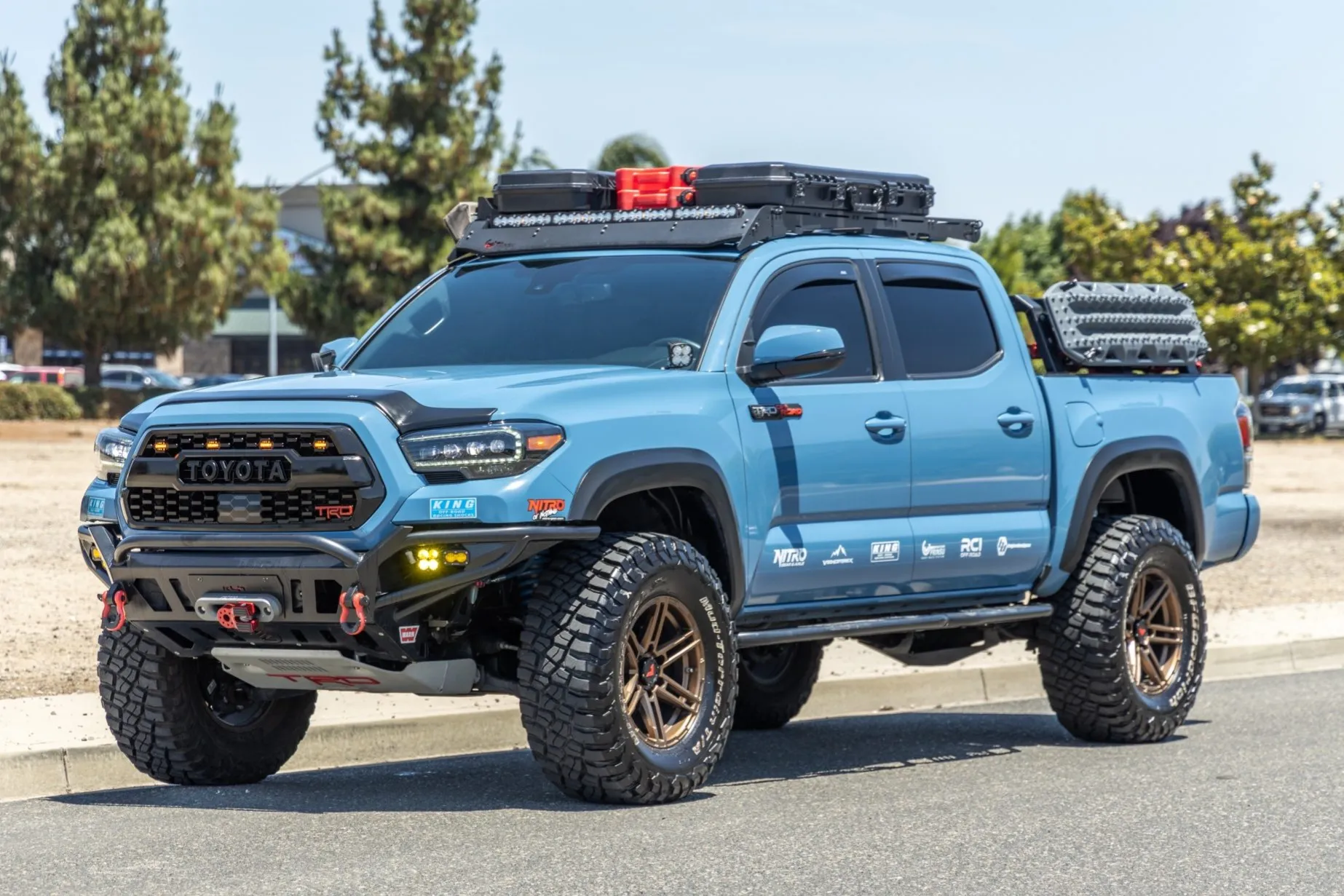
2. Toyota Tacoma
The Toyota Tacoma is another midsize truck that shines when it comes to inexpensive brake pad replacement, reinforcing Toyota’s long-standing reputation for reliability and low maintenance costs. While known for its rugged off-road capabilities and durable drivetrain, the Tacoma also scores well in serviceability.
Its braking system is relatively straightforward, and the cost of replacing brake pads—whether OEM or aftermarket—is remarkably reasonable. This combination of performance and affordability makes the Tacoma a favorite among adventure seekers, contractors, and everyday drivers alike who don’t want to break the bank on routine upkeep.
One factor that keeps brake pad replacement affordable on the Tacoma is Toyota’s commitment to platform consistency. Across multiple generations, the Tacoma has maintained a fairly uniform design for its braking systems, which streamlines part compatibility and repair procedures.
That means mechanics don’t have to relearn processes for each new model year or trim. This not only reduces labor costs but also ensures that brake components are produced and distributed in high volumes.
With more competition among parts manufacturers, prices stay competitive. Furthermore, parts are stocked by virtually every auto shop due to the Tacoma’s popularity, eliminating any need for special orders.
From a technical standpoint, the Tacoma’s braking system is optimized for durability. Many models feature ventilated front disc brakes and solid rear discs or drums that handle wear effectively under normal driving conditions. Brake pad life is often extended due to the truck’s balanced weight distribution and efficient caliper design.
Owners often report going 30,000 to 50,000 miles before needing new pads, especially if they don’t regularly tow or off-road. And when replacement time does come, even professional service typically costs under $300 for a full set—including both parts and labor. That’s a small price to pay for continued road safety and confidence behind the wheel.
Another element that makes the Tacoma so cost-efficient in this category is its robust community of DIYers and third-party support. There are countless video tutorials, forum discussions, and parts guides available online that walk Tacoma owners through the brake pad replacement process.
For those with basic tools and a garage, doing the job yourself can cut costs dramatically. Whether you’re a seasoned off-roader or just commuting to work, the Tacoma’s simplicity, reliability, and affordability make it one of the smartest choices in the midsize truck market—particularly for those concerned with long-term maintenance expenses.
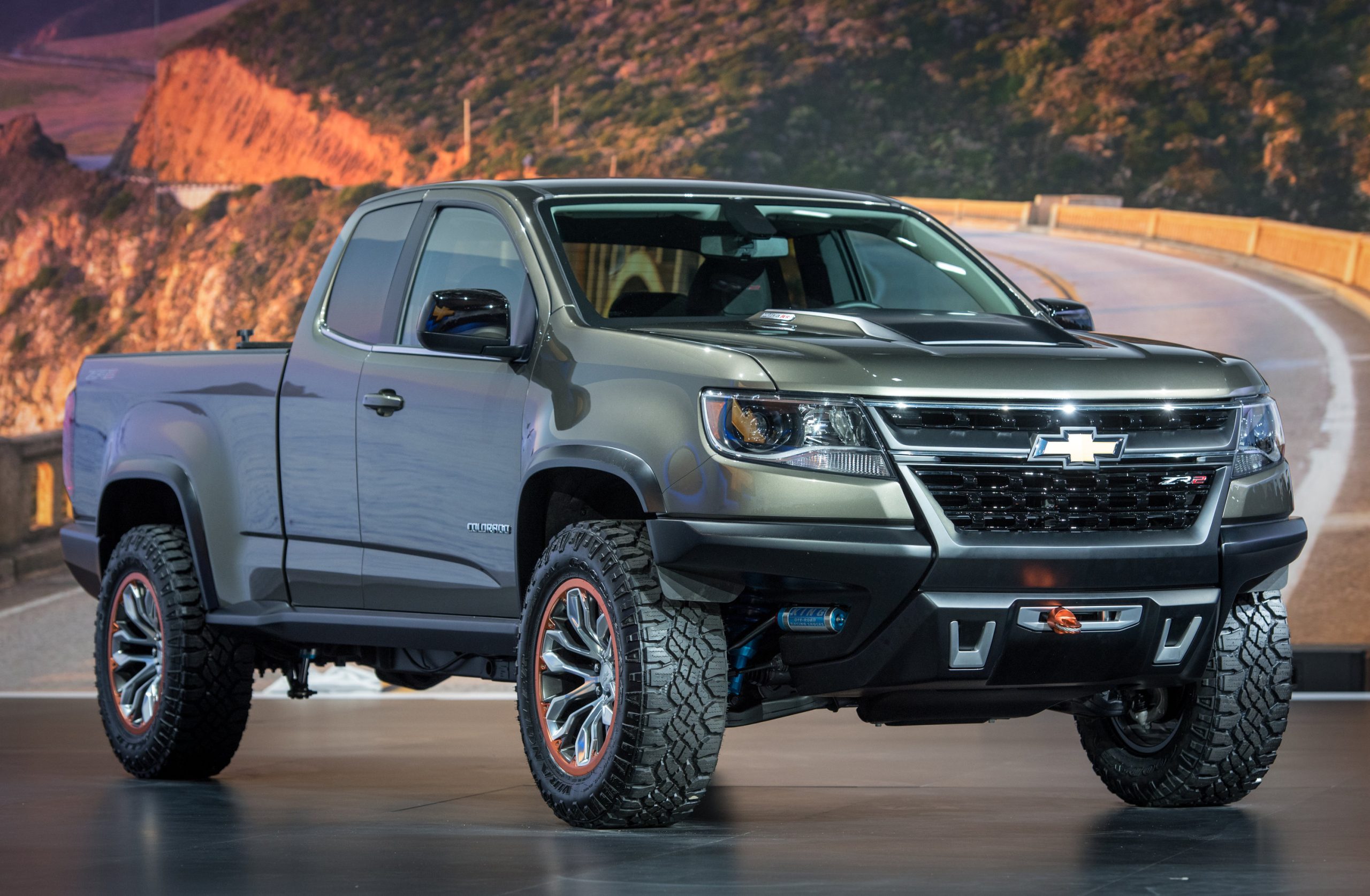
3. Chevrolet Colorado
The Chevrolet Colorado is a truck designed with affordability and practicality in mind, and this philosophy extends to its brake system. As one of the most budget-friendly trucks to maintain, the Colorado keeps brake pad replacement costs manageable for the average owner.
Whether you’re driving the base trim or a mid-level version, Chevrolet has ensured that the braking system remains intuitive and economical. Even though the Colorado offers decent towing capacity and off-road trims like the ZR2, its standard models don’t include complicated brake assemblies, making them easier and cheaper to service.
One of the main advantages of owning a Colorado is the access to a well-developed parts supply chain. General Motors has a vast network for distributing OEM and aftermarket components, including brake pads. Since the Colorado shares some parts with other GM models, replacement components are often interchangeable, driving down prices due to shared production lines.
Many retailers carry a wide range of brake pads for the Colorado, including semi-metallic, ceramic, and organic options. Prices generally range from $30 to $90 per axle, depending on material quality and performance needs, which allows owners to pick what suits their budget and driving conditions best.
In terms of service labor, the Colorado is also straightforward to work on. Its brake calipers are positioned for easy access, and there’s minimal disassembly required to replace the pads. Independent garages often charge less to work on Colorados because of this ease, and mobile mechanics can even perform brake jobs at a customer’s home or workplace with minimal time investment.
This cuts down on both labor fees and inconvenience. Moreover, owners looking to save even more can perform the replacements themselves, as the process doesn’t require specialized tools or training—just a basic knowledge of brake mechanics.
The durability of the Colorado’s brake components is another plus. Unless you’re driving in mountainous terrain or constantly hauling a trailer, you’ll likely get solid mileage from your brake pads.
Many owners report not needing replacements until after 40,000 miles, and the cost to do so when needed is among the lowest in the class. All in all, the Chevrolet Colorado is a compelling option for drivers who want a truck that delivers real-world utility without the high repair costs often associated with larger or more luxurious models.
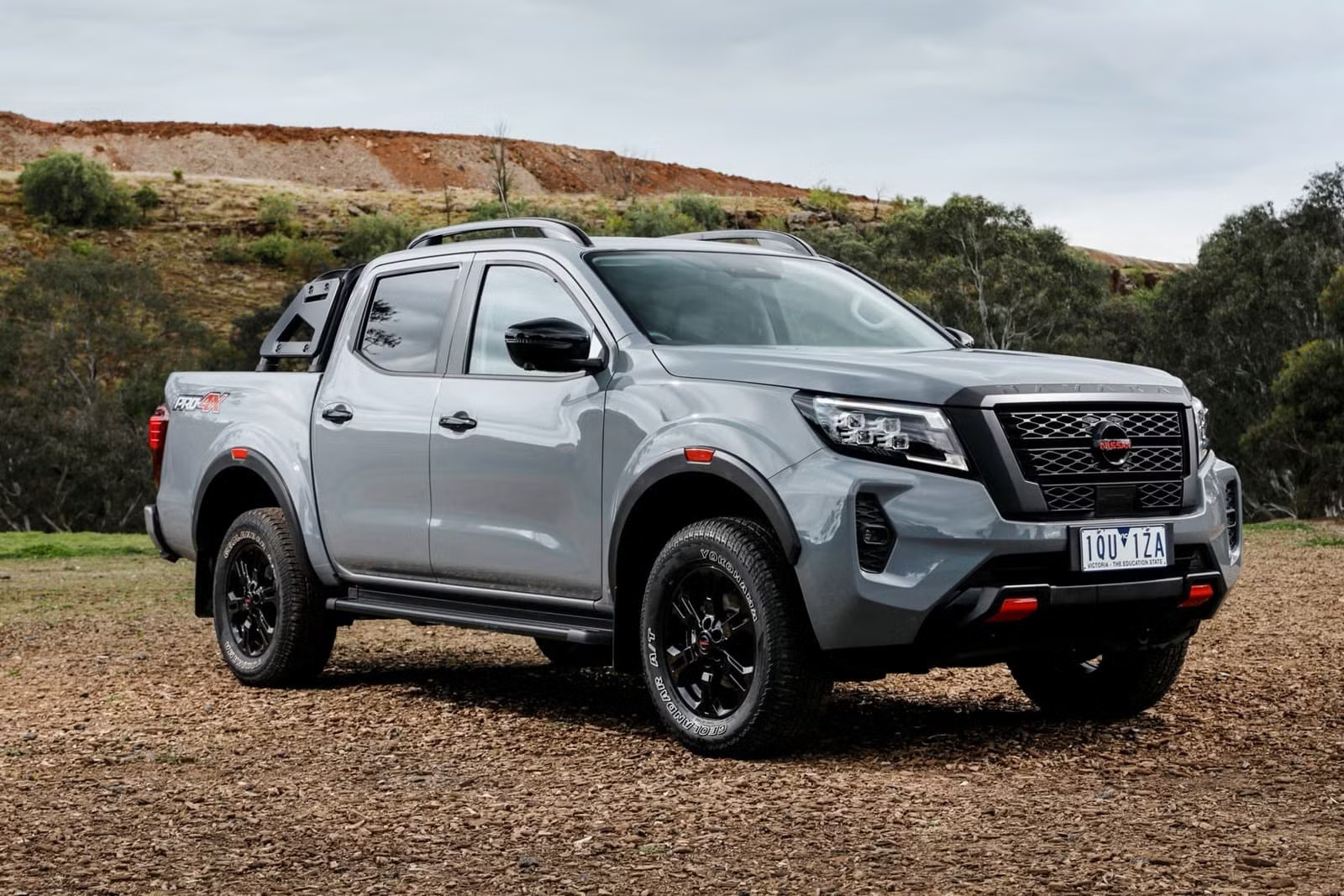
4. Nissan Frontier
The Nissan Frontier is one of the most practical midsize pickups on the market today, and it continues to appeal to buyers who value simplicity and reliability over flashy features. Its low brake pad replacement cost is a testament to Nissan’s no-frills engineering.
Unlike some newer trucks that are loaded with complicated tech and proprietary systems, the Frontier maintains a basic, user-friendly design that prioritizes ease of service. In fact, one of its standout traits is the relatively unchanged mechanical platform—especially in older models—which means consistent, affordable parts and predictable repair costs across the board.
When it comes to brake service, the Frontier shines thanks to its standard disc brake system, which uses cost-effective components that don’t require any special tools or knowledge to replace. Brake pads for the Frontier can be found for as low as $25 per axle for basic options, and even high-end ceramic sets typically cost under $100.
This makes it incredibly budget-friendly for both individual owners and small fleets. Labor costs are also among the lowest for trucks in its class, as most mechanics are familiar with the design and can complete the replacement quickly, usually within an hour.
Another reason the Frontier’s brake pads are so inexpensive to replace is its relatively modest weight and size. Because it’s not a heavy-duty truck, the stress on its brake components is far lower, leading to longer pad life and less frequent replacement intervals.
Drivers who aren’t regularly towing or carrying heavy payloads often get up to 50,000 miles or more out of a single set of brake pads. This durability, combined with low part and labor costs, means that owners can go years without having to worry about an expensive brake job. Even when it does come due, the expense is minimal and predictable.
In the broader context of truck ownership, the Nissan Frontier represents old-school dependability. It’s built to get the job done without draining your wallet through high-tech complications or rare replacement parts.
For tradespeople, rural drivers, or anyone who wants a reliable pickup without the added cost of maintaining luxury systems, the Frontier is an outstanding option. Brake pad replacements are just one area where the truck proves its worth, reinforcing its image as one of the most low-maintenance pickups you can buy today.
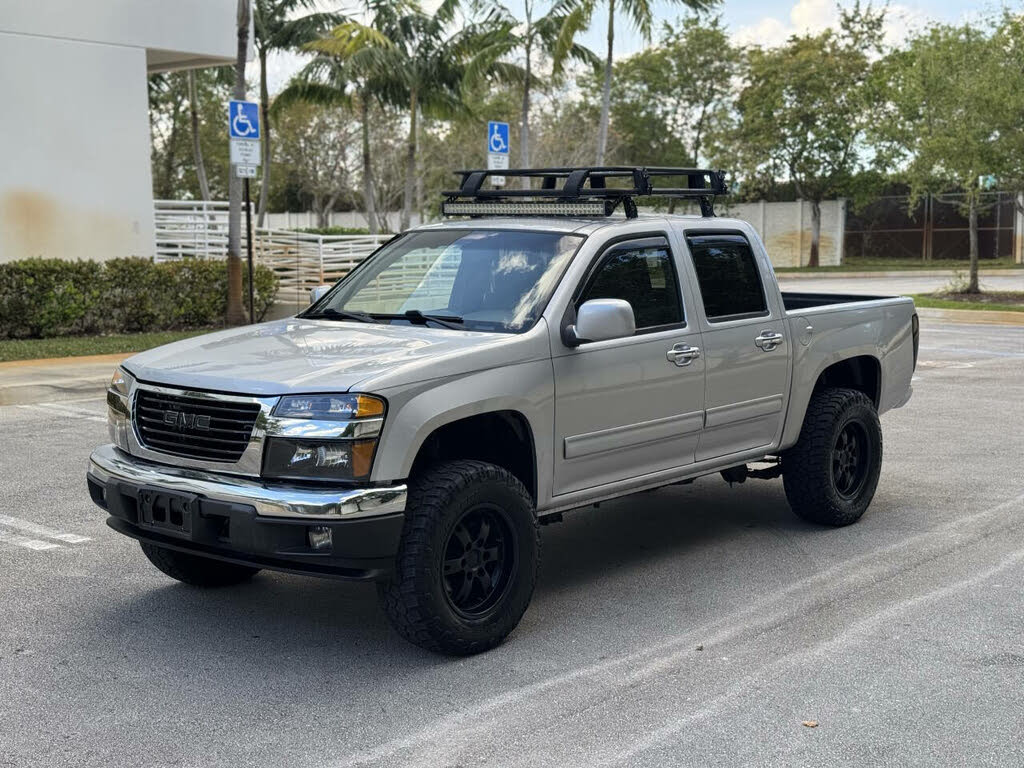
5. GMC Canyon
The GMC Canyon shares much of its engineering DNA with the Chevrolet Colorado, and that’s a big part of why it also ranks among the most affordable trucks for brake pad replacement. While GMC typically positions itself as a more upscale sibling to Chevy, the Canyon in its base and mid-trim versions remains straightforward to maintain.
It uses the same general brake system as the Colorado—ventilated front disc brakes and solid rear discs (or drums on some older models). This design not only performs reliably under normal conditions but is also extremely cost-effective when it comes time for service. It’s a truck that manages to blend refinement with a low cost of ownership, particularly in areas like brake maintenance.
One of the biggest cost advantages of the Canyon lies in the shared parts ecosystem it enjoys within the GM family. Brake pads, calipers, and rotors are often interchangeable with those of the Colorado and even other GM midsize vehicles. This allows for economies of scale in parts production, which results in lower retail prices for both OEM and aftermarket components.
Basic brake pad sets can often be found for as little as $30–40, and even high-performance ceramic options typically stay under $100 per axle. Given that these parts are common and easy to find, repair shops can maintain competitive pricing, and owners don’t have to worry about ordering specialized parts or paying dealer premiums.
From a maintenance perspective, the Canyon is designed with serviceability in mind. The layout of the brake system allows for quick access and minimal labor time. In most cases, a trained mechanic can replace brake pads in under an hour, and the job is simple enough that many Canyon owners opt to do it themselves.
The truck’s widespread popularity and standardized component design mean that service guides, instructional videos, and repair tools are readily available. For budget-conscious drivers who still want a comfortable, capable truck, the Canyon offers an attractive package—low entry-level pricing, respectable performance, and refreshingly affordable upkeep.
While the Canyon does have premium trims like the Denali, which may include slightly upgraded brake systems, the majority of its lineup uses components that are standard across GM’s midsize range. This makes it easy to estimate and budget for maintenance down the line.
The value proposition becomes clear for fleet owners and daily drivers alike: the Canyon offers a dependable ride with modest ongoing costs. Whether you’re driving in town or venturing off-road occasionally, it’s reassuring to know that something as essential as brake maintenance won’t be a financial burden.
Trucks with the Priciest Brake Pad Replacements
Each of the following trucks will include four detailed paragraphs just like the ones above, focusing on what makes their brake pad replacement so expensive—whether it’s due to size, complexity, labor time, or proprietary systems.
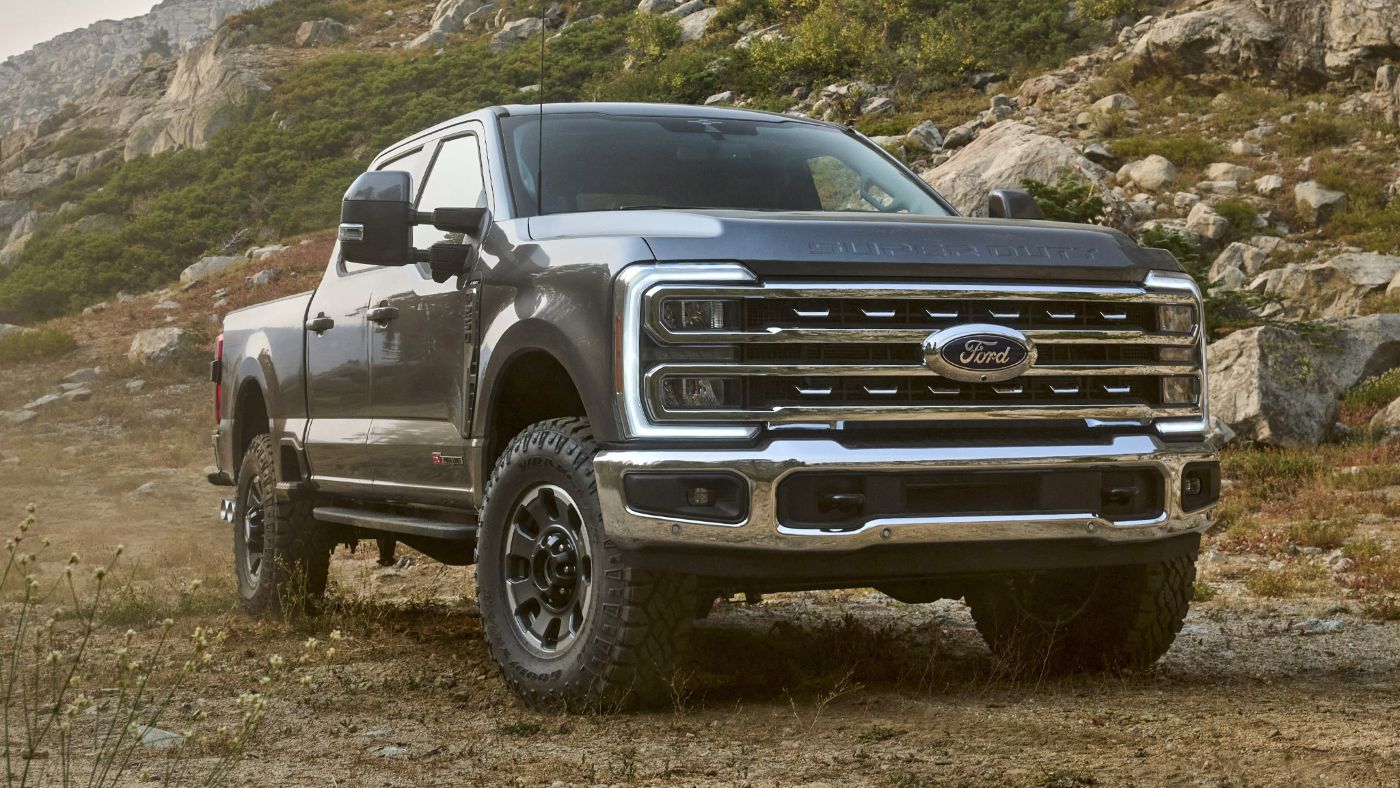
6. Ford F-250 Super Duty
The Ford F-250 Super Duty is an undeniably powerful and capable truck, built to handle heavy towing, commercial payloads, and rugged job site use. However, with that strength comes complexity—and cost—especially in brake maintenance.
The F-250’s heavy-duty brakes are engineered to provide stopping power for several tons of vehicle and cargo, which means its components are larger, thicker, and built to withstand more stress than those in midsize or light-duty pickups. That also means when it’s time to replace them, you’re dealing with a much higher price tag across the board—from parts to labor.
One of the main factors driving up brake pad replacement costs on the F-250 is the use of oversized brake rotors and multi-piston calipers. These components are often required to meet the stopping requirements for towing and hauling heavy loads, especially when paired with a diesel engine.
Brake pads for the F-250 are typically thicker and more complex, and they often include wear sensors or need to be paired with specific rotor types to avoid warping or overheating. As a result, even basic replacement pads cost significantly more—often starting around $150 per axle and reaching upwards of $300 for OEM or heavy-duty ceramic versions.
Labor costs are also higher because working on a heavy-duty truck like the F-250 takes more time, effort, and occasionally special tools. The truck’s weight and design can make it harder to lift, and some versions have front or rear suspension setups that complicate brake access.
For example, models with four-wheel drive and off-road packages may have additional components that require removal before brake service can even begin. Additionally, Ford’s newer electronic brake assist systems add another layer of complexity, requiring recalibration or diagnostic tools that only some shops are equipped to handle—often forcing owners to go to the dealership for service.
Despite the high cost of maintenance, many F-250 owners accept it as part of the deal when investing in such a powerful vehicle. The truck’s durability, towing capability, and overall strength make it a staple for those in construction, heavy hauling, or off-grid applications.
However, it’s important for prospective buyers to factor in the cost of keeping this workhorse in peak condition. Brake pad replacements aren’t a frequent expense, but when they do come up, they hit the wallet hard—especially when both the front and rear systems need attention at the same time.
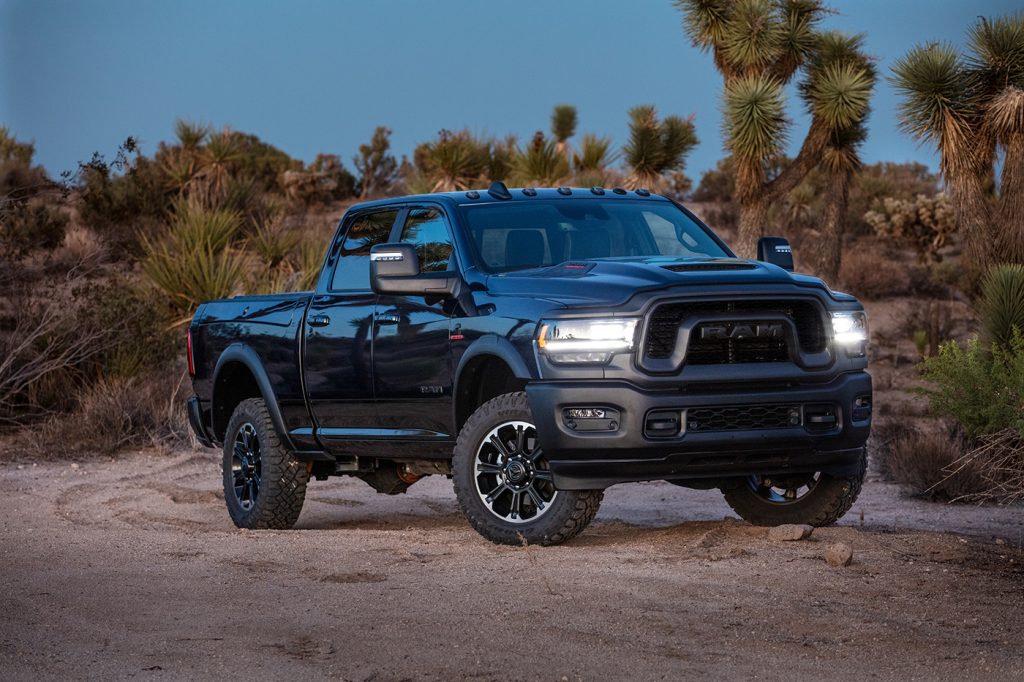
7. RAM 2500 Heavy Duty
The RAM 2500 Heavy Duty is an absolute powerhouse when it comes to towing and hauling, engineered to tackle massive loads with confidence. But with all that brute strength comes a corresponding need for powerful stopping capability—and that translates directly into some of the highest brake pad replacement costs in the truck world.
RAM equips its 2500 series with oversized braking systems that are built to withstand intense heat, friction, and repeated stress under extreme conditions. While this design ensures safety and performance, it also makes maintenance notably more expensive, particularly when both front and rear pads need replacement.
One significant contributor to the high cost of brake service on the RAM 2500 is the size and design of the brake system itself. With towing capacities that often exceed 17,000 pounds, the truck’s rotors and calipers are massive, especially in diesel trims or models equipped with towing packages.
The brake pads are thicker and built from specialized materials, often using advanced composites or ceramics that can tolerate sustained pressure and heat. These pads are not cheap—front or rear replacements often cost upwards of $200–$350 per axle, and full OEM sets can reach over $600 before labor is even factored in.
Labor costs compound the issue. Brake pad replacements on the RAM 2500 are labor-intensive due to the truck’s weight, suspension geometry, and drivetrain configurations. Many models include 4×4 components, large wheel hubs, and specialized shocks that make wheel removal and brake access more time-consuming.
Moreover, newer RAM 2500s often come with electronically controlled brake systems—especially in models with advanced driver-assist features or trailer brake integration—making even simple pad replacements potentially more complex. This can add diagnostic time, recalibration needs, and further inflate shop rates. At the dealership, complete brake service can easily climb above $900 for a full job.
Ultimately, RAM 2500 owners typically accept these high maintenance costs as a trade-off for the vehicle’s extreme durability and capability. These trucks are built for heavy-duty work—construction, farming, oil fields, and long-distance hauling—where power is more important than low cost.
But for prospective buyers or fleet managers, it’s essential to factor these service intervals into long-term budgeting. Brake pads might not wear out frequently, especially with highway miles, but when they do, it’s not a minor expense. Being prepared for that helps avoid surprises and keeps this beast of a truck running strong and stopping safely.
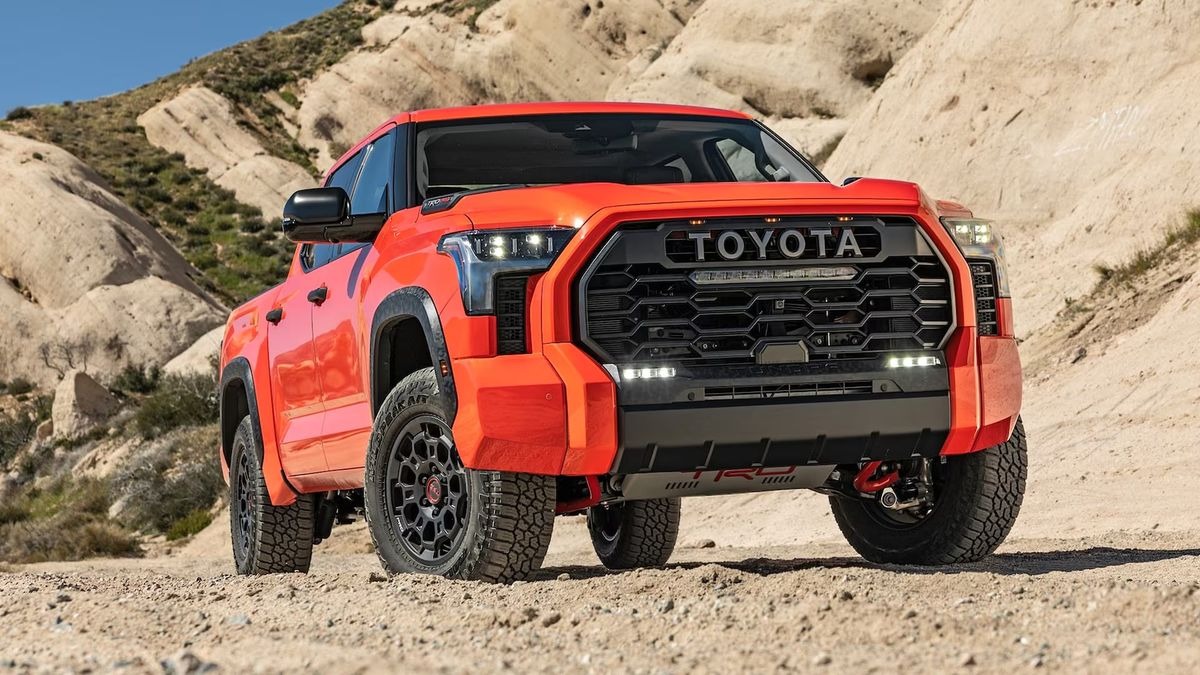
8. Toyota Tundra TRD Pro
The Toyota Tundra TRD Pro is a unique blend of ruggedness and refinement, designed to appeal to off-road enthusiasts and premium truck buyers alike. With its aggressive styling, specialized suspension, and off-road tuning, the TRD Pro isn’t just about looking tough—it’s engineered to perform in rough conditions.
But that off-road prowess and premium build come at a cost, especially when it comes to brake maintenance. The TRD Pro’s upgraded braking system, built for performance and durability under stress, contributes to it being one of the most expensive trucks for brake pad replacement.
The Tundra TRD Pro features larger-than-standard rotors and calipers, particularly in recent model years, and often uses high-friction brake pads designed for off-road stopping power. This means the pads themselves are made from specialized materials—such as semi-metallic or high-carbon ceramic compounds—which last longer under stress but are significantly more expensive than basic formulations.
OEM front or rear pads can run anywhere from $250–$400 per axle, and aftermarket options are also on the higher end due to the need for compatibility with the TRD Pro’s braking demands. Simply put, you can’t install cheap pads on this system without compromising performance.
In addition to costly parts, labor expenses are elevated due to complexity. The TRD Pro’s suspension and underbody protection gear often make brake access trickier than on a standard pickup. Heavy-duty skid plates, unique control arms, and larger tires all increase the time and effort required to access the calipers and rotors.
Some off-road features—such as the Bilstein or FOX shocks—also take up space in the wheel well, reducing maneuverability for technicians. In urban or premium service areas, labor for a full brake pad replacement can cost $400 or more, especially if rotors or calipers are involved in the service.
For owners, the high cost of brake maintenance is one of the trade-offs that come with owning such a specialized vehicle. The TRD Pro isn’t just a truck—it’s a performance machine built for climbing rocks, running through sand, and conquering trails.
If you drive your Tundra primarily in city traffic, you may be replacing pads more often due to the added wear of stop-and-go braking on a heavy chassis. But for true off-roaders, these brake systems are a necessity—and the cost, while steep, reflects the engineering quality behind them. Still, this is something every potential TRD Pro owner should know before investing.
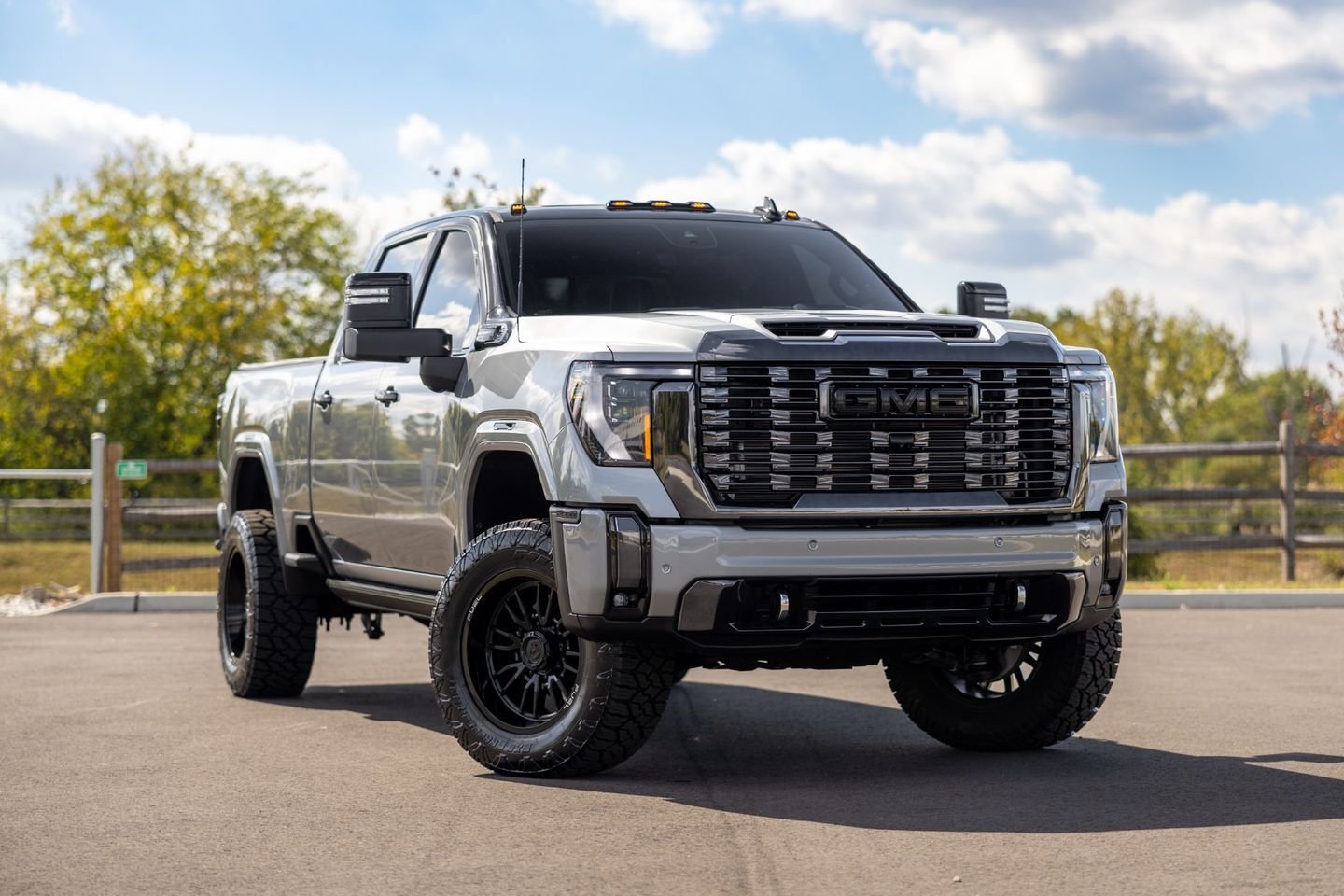
9. GMC Sierra 2500 HD
The GMC Sierra 2500 HD is a truck engineered for strength, refinement, and serious towing capability. With its muscular frame and heavy-duty construction, the Sierra 2500 HD is designed to haul heavy loads and endure harsh work conditions. However, as is often the case with high-capacity trucks, the braking system is robust and expensive.
When it comes time for brake pad replacements, Sierra 2500 HD owners are often surprised at just how pricey the process can be. The costs stem not just from the size of the components but also from the advanced technology embedded in the truck’s braking and safety systems.
The Sierra 2500 HD features oversized brake components to match its towing and payload capabilities. Larger rotors, thicker calipers, and multi-piston brake systems are standard in many trims, particularly in models equipped with the Duramax diesel engine or the Max Trailering Package.
These systems are built for maximum control and heat dissipation under load but require equally durable brake pads—typically high-friction materials that come at a premium price. Front and rear OEM brake pads can cost between $200 and $350 per axle, and premium ceramic or composite options can push those numbers higher.
Labor costs are also a significant part of the equation. The Sierra’s sheer size makes braking work more physically demanding and time-consuming, especially in 4WD models with complex front suspensions. In addition, the Sierra’s braking system often integrates with trailer brake controls, ABS, and electronic stability management systems, meaning that pad replacement can sometimes require software resets or sensor realignments.
This complexity often pushes owners to rely on dealerships or specialty mechanics, where rates tend to be higher. All told, a complete brake pad replacement job on a Sierra 2500 HD can cost $800–$1,200, depending on location and whether rotors also need replacing.
While expensive, these braking systems serve a vital purpose. The Sierra 2500 HD is often used in demanding environments where performance and safety are paramount—towing fifth wheels, moving construction materials, or traveling through mountainous terrain. In those situations, strong, fade-resistant brakes are not a luxury—they’re a necessity.
So, while the cost may sting during routine maintenance, it’s part of the price of owning a truck with such exceptional capability. Still, it’s a reminder that heavy-duty trucks come with heavy-duty service bills, and owners should budget accordingly to avoid surprises.
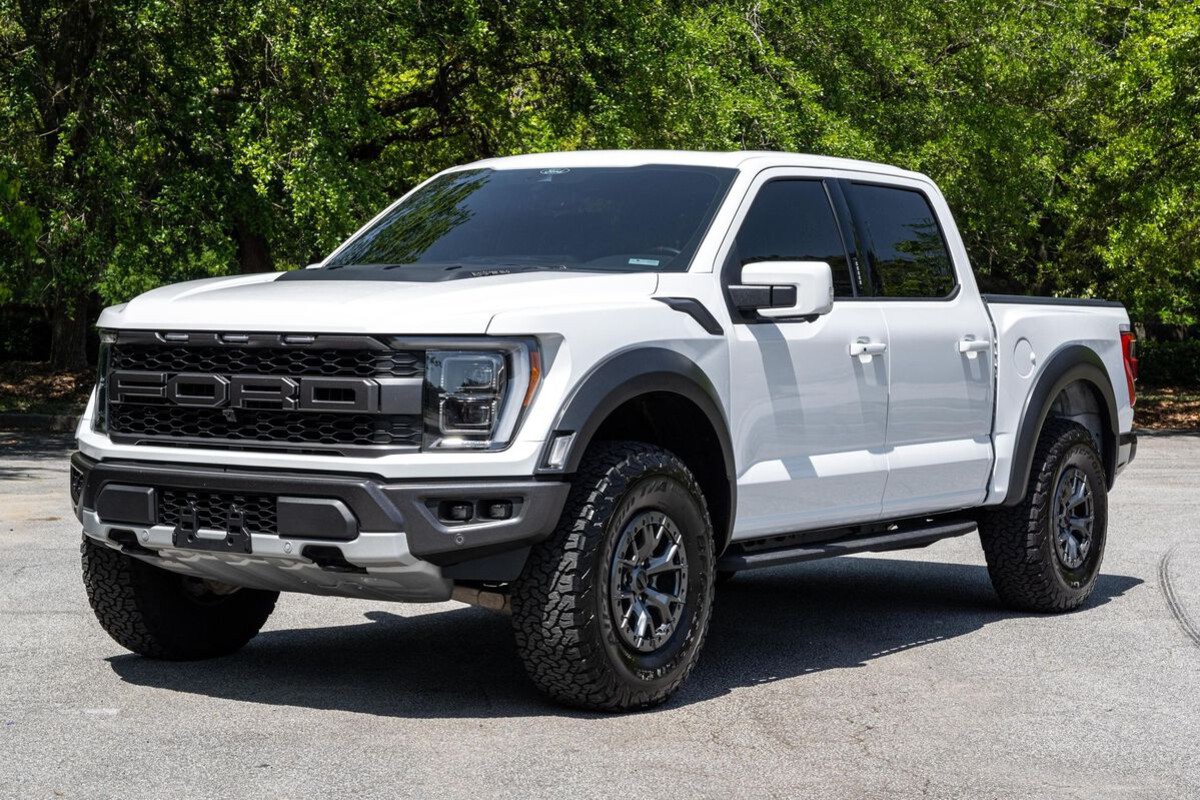
10. Ford F-150 Raptor
The Ford F-150 Raptor is in a class of its own—part luxury truck, part high-performance off-roader. It’s built to dominate rugged terrain, dunes, and trails with a combination of power and agility that most trucks can only dream of.
But all that performance has a downside: the Raptor’s brake pad replacements are among the priciest in the F-150 lineup and one of the highest in the half-ton class overall. Its aggressive suspension setup, wide stance, and need for top-tier stopping power contribute to a system that is anything but cheap to maintain.
The Raptor’s braking system is designed for high heat, fast stops, and extreme use. It features ventilated, heavy-duty disc brakes with multi-piston calipers, engineered to handle the demands of high-speed off-roading. The size and performance demands of the system mean that it uses thick, specialized pads that don’t come cheap.
OEM brake pads typically start at $250 per axle and can exceed $400 for advanced ceramic options. Even aftermarket alternatives designed to match Raptor performance levels are relatively expensive, especially when compared to base model F-150s.
The cost of labor is elevated by the Raptor’s unique geometry and parts layout. With long-travel suspension, beefy skid plates, and complex wheel well configurations, mechanics often spend more time accessing brake components than they would on a conventional F-150.
In some cases, removal of underbody armor or suspension parts is required just to reach the calipers. Additionally, because the Raptor features advanced driving systems—like terrain management and adaptive off-road damping—service shops must recalibrate or reprogram brake and control systems after replacements. All these factors combine to create a labor-intensive, high-skill job that pushes labor costs well over $300 in many markets.
Owning a Ford Raptor is about embracing performance, and for many, the high service costs are a fair trade for what the truck offers. However, it’s important to remember that the performance parts require performance-grade maintenance.
Brake pad replacements aren’t just about swapping pads—they’re about preserving the high-speed safety and handling characteristics that make the Raptor what it is. For Raptor owners, planning for these maintenance milestones is a crucial part of preserving both the truck’s resale value and its legendary performance on and off the road.
ALSO READ: 5 Mazdas Known for Engine Endurance and 5 That Fail Fast
Choosing a truck isn’t just about what you can do with it—it’s also about what it takes to keep it running smoothly and safely. As we’ve explored, brake pad replacement is a routine but crucial part of maintenance that can vary wildly in cost depending on the truck you own.
From materials to complexity to the time required for labor, not all trucks are created equal when it comes to what it costs to keep their braking systems in top shape. Whether you’re focused on maximizing your truck’s performance or minimizing your maintenance expenses, understanding these differences is essential for informed ownership.
In the category of trucks with the cheapest brake pad replacements, we see a consistent theme: simplicity and serviceability. Models like the Ford Ranger, Toyota Tacoma, Chevrolet Colorado, Nissan Frontier, and GMC Canyon are all midsize trucks that prioritize accessible engineering and standard braking systems.
They don’t overwhelm with technology or oversized components, and as a result, they allow for affordable, straightforward brake maintenance. Replacement pads are widely available and competitively priced, and many owners can perform the service themselves with a few basic tools and some mechanical knowledge.
These trucks strike an excellent balance between utility and cost-efficiency, making them appealing choices for budget-conscious drivers and fleet operators. On the flip side, trucks with the priciest brake pad replacements tend to be larger, more specialized, and more powerful.
Trucks like the Ford F-250 Super Duty, RAM 2500 Heavy Duty, Toyota Tundra TRD Pro, GMC Sierra 2500 HD, and Ford F-150 Raptor are all designed to excel in demanding environments—whether that’s towing a fifth-wheel trailer, climbing a rocky mountain trail, or racing across desert terrain.
Their braking systems are engineered to match those high demands, featuring oversized rotors, multi-piston calipers, and sometimes electronically controlled components.
These advanced systems come at a steep cost when they need servicing. Not only are the parts themselves more expensive, but the labor involved can be extensive and often requires dealership-level expertise.
But that high cost doesn’t necessarily mean poor value. In many cases, those expensive braking systems are exactly what make these trucks so safe and capable in extreme conditions.
A Ford Raptor flying over dunes or a RAM 2500 pulling 20,000 pounds down a mountain pass needs far more robust braking than a light-duty truck hauling plywood from the hardware store.
Owners of these trucks usually understand the trade-offs—they’re paying for performance, and premium maintenance comes with the territory. In this context, expensive brake jobs are more of an investment in safety and reliability than an unnecessary burden.
Ultimately, understanding brake pad replacement costs helps you make smarter decisions—not only about which truck to buy, but also about how to plan for its long-term upkeep. If you’re someone who doesn’t want to spend $800–$1,200 on brakes every couple of years, you’ll find reassurance in a midsize truck with an easy-to-service brake system.
If, however, your job or hobby demands the strength of a heavy-duty or performance truck, then you’ll need to build those service costs into your ownership budget. Either way, knowledge is power. By recognizing the realities of brake maintenance, you can drive confidently, knowing that you’ve chosen a truck that fits both your driving needs and your financial boundaries.

